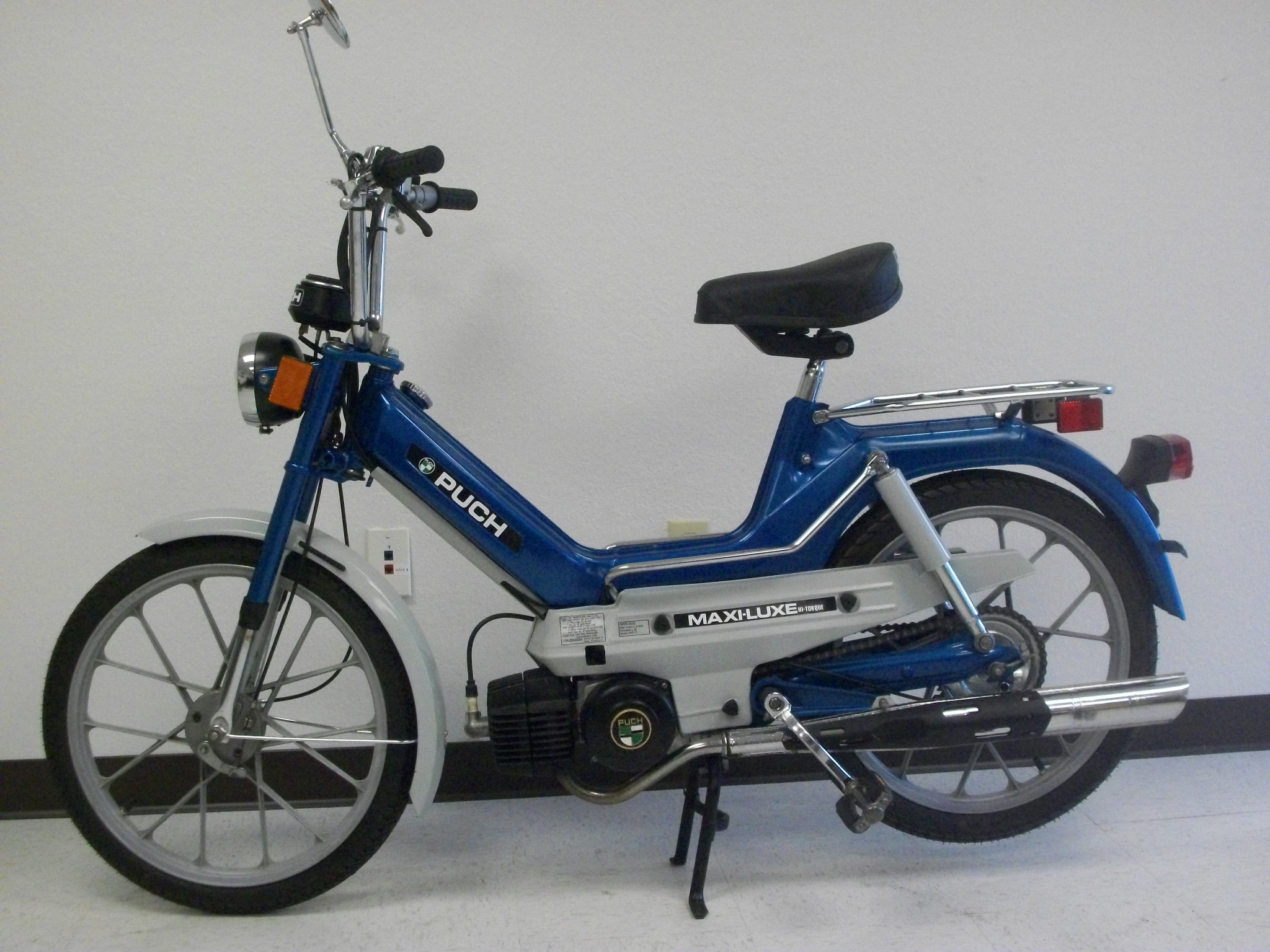
In 1923 the Italian engineer and FIAT agent Giovanni Marcellino is said to have been sent by the banks to wind up the Puch factory in Graz. However, again in 1919, the new Type XII Alpenwagen was developed. With the collapse of the Austro-Hungarian empire following the War, the market for automobiles shrank and production was discontinued. Motorcycle Puch 500 VL with sidecar Felber, built 1937 The Puch green and white chequered badge is in the colours of the Steyr town flag and is very similar in concept to the BMW badge, which is in the colours of the Bavarian flag. During World War I, Puch became an important vehicle supplier to the Austro-Hungarian Army. Puch automobiles were successful at the pre-war Österreichische Alpenfahrt rally and from 1913, the four-cylinder 38 PS (horsepower) Type VIII Alpenwagen was manufactured in Graz. In that year the company employed about 1,100 workers and produced 16,000 bicycles and over 300 motorcycles and cars annually. In 1912 Johann Puch went into retirement and became the company's honorary president. In 1910, Puch is known to have produced sedans for members of the Habsburg imperial family. In 1906 the production of the two-cylinder Puch Voiturette began and in 1909 a Puch car broke the world high-speed record with 130.4 km/h. Production of engines was started in 1901 and cars followed in 1904. Both transmissions use a centrifugal clutch.The main production plant, later called Einser-Werk, was constructed in the south of Graz, in the district of Puntigam. The versions of the transmissions can be identified by the shape of the gearboxes: The E50 has a round gearbox whereas the two speed has a rectangular gearbox.

The engine is coupled to either a single speed E50 or a two speed ZA50 transmission. However, these can be modified by de-restricting the airbox, carburetor, exhaust manifold, pipe, and the use of aftermarket and performance parts. The Puch Maxi uses a 2 stroke 49 cc gasoline engine that comes in three horsepower ratings: 1.0, 1.5, and 2 HP that limits the speed to 20 mph (32kmh), 25 mph (40 kmh) and 30 mph (48 kmh) respectively. It featured the single speed E50 engine/transmission.

These have Honda-style controls where the switches integrate into the lever/throttle housings and come stock with turn signals and sidecovers that enclose a battery. Maxi Guam Edition: a few Maxis that showed up in the United States that claimed to be manufactured in Guam.Newport II: Newport that features the ZA50 (two speed) engine/transmission.


1978 PUCH MOPED MANUAL FULL
Maxi Sport MKII: Has a full suspension, mag wheels, the ZA50 (two speed) engine/transmission, a longer seat (but not long enough for passengers like the maxi D or LS model).Maxi N: A rigid frame lacking a speedometer that was the cheapest model, and dubbed the "Poor man's maxi".Maxi Luxe: A Maxi with a stock Hi-Torque head and mudflaps.Maxi D or LS: same as the S, but with a longer seat for a passenger.Maxi S: this is the full suspension model with the single speed E50 (one speed) engine/transmission.


 0 kommentar(er)
0 kommentar(er)
